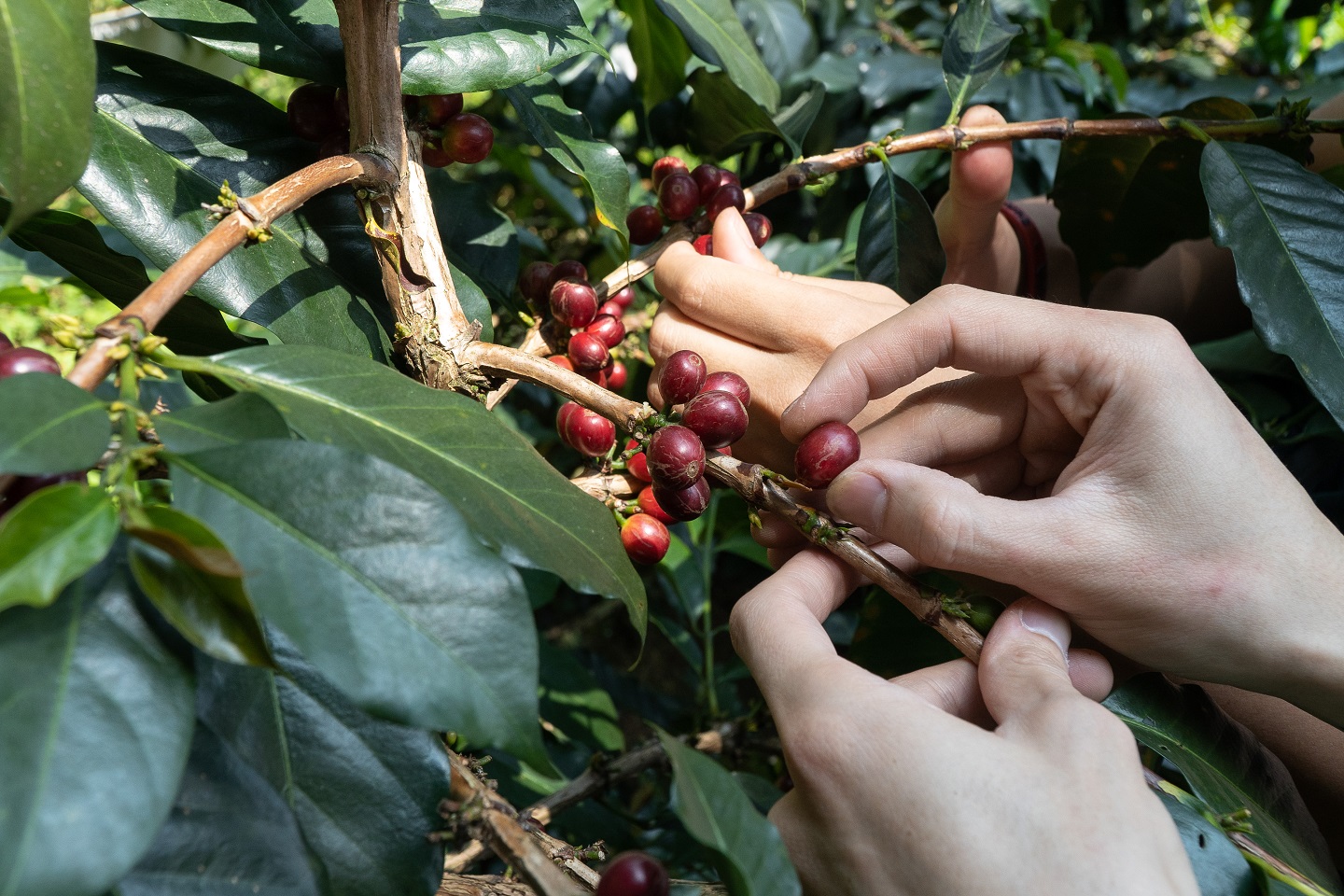
Indonesia is the world’s fourth biggest producer of coffee (All photos: Nespresso)
_a738865.jpg
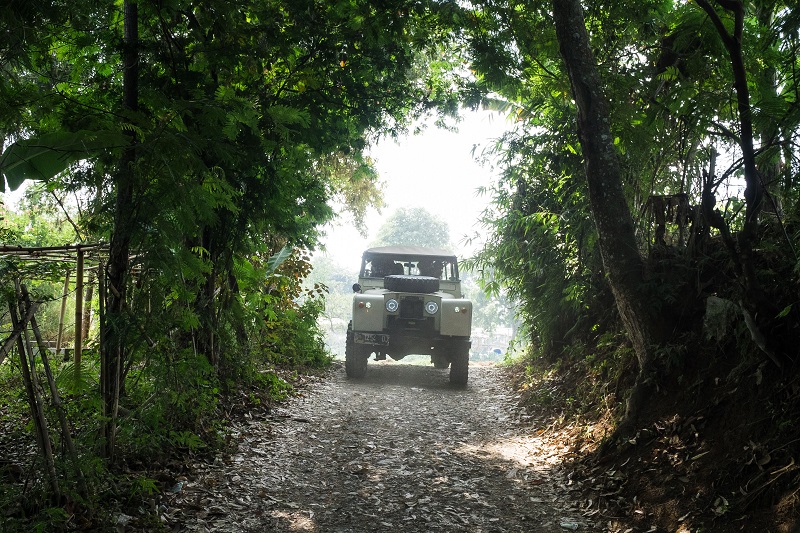
We abandoned the Land Rovers to go onward on foot, the forest immediately thickening around us. A path through the lush growth led to a makeshift shed where coffee community leader Aki Dadi awaited us. He is one of 1,400 smallholder farmers with whom Nespresso works to acquire top-quality coffee cherries from Bandung. It was at Nespresso’s invitation that we were there, to better understand its Positive Cup philosophy of economic and environmental sustainability.
“I learnt to plant coffee by trial and error in 2004 and sold my first harvest in 2006 to anyone who wanted it,” said Aki Dadi via a translator. “The land was loaned to us by [state forestry firm] Perhutani. Each farmer has an average of 1.2ha. Since we started working with Nespresso, harvest yield per tree has increased from 3kg or 4kg to 6kg, and as the quality of the cherries improves, so does the fetching price. And every April, before harvest starts, Nespresso presents us a bonus from profits of the previous year.”
_a738900.jpg
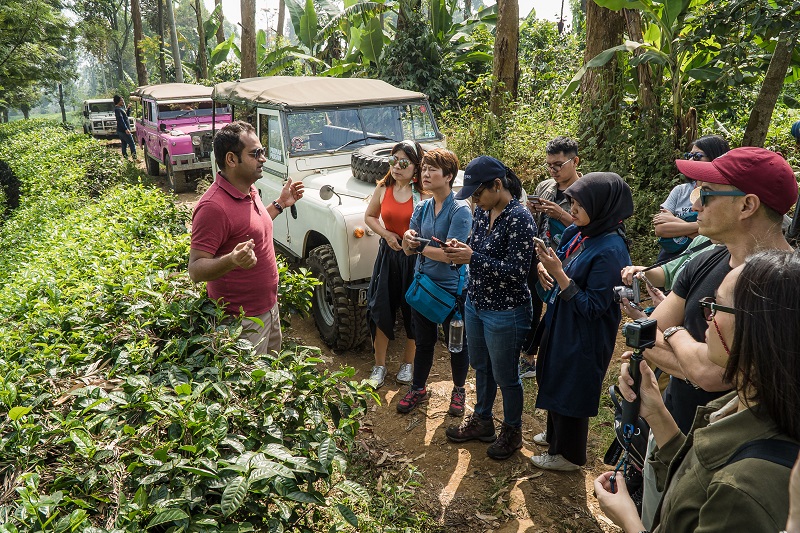
It is an occupational hazard that we approach most corporate social responsibility programmes with scepticism, an inevitable consequence of wading through thick piles of CSR hogwash positioned as sustainability efforts, spanning mere lip service to blatant greenwashing. For all that cynicism, however, I was delighted to join Nespresso on this trip and not just because of the copious amounts of coffee promised. Past engagements with the brand at its flagship boutique in The Gardens Mall, Kuala Lumpur, had left the impression that it does nothing by half measures.
Accompanying us there, for instance, was not just Nespresso sustainability project manager Manu Jindal but also a doctor. While nothing happened to warrant medical attention, we could understand the precaution. Our small group did not stand around listening to testimonies; we got our hands dirty experiencing the personal touch that goes into coffee production in this region.
Of processes + people
We donned aprons and were dispatched to give harvesting a try. In between native hardwood and fruit trees such as avocado and jackfruit were coffee plants, averaging 1.5m tall with a profusion of cherries.
Early in its collaboration with Javanese farmers, Nespresso showed the difference picking ripe, overripe and green or under-ripe cherries had on flavour and tree impact. Only ripe cherries are now selected, delicately hand-picked so their stems remain on the trees for future healthy growth — factors that influence the higher yield and superior quality Aki Dadi spoke about. It sounds easier than it is: 20 minutes into the task, my apron’s pocket was not even quarter-filled and my back ached from having to bend to reach low-hanging cherries.
The Land Rovers then carried us to the wet mill located onsite as the cherries have to be processed the day they are picked to prevent premature fermentation. The weight of the harvested cherries are recorded to determine the bonus that will be paid to the farmer. Processing begins with the separation of good cherries from bad. They are soaked in water and floaters are removed, rising to the top as they are empty (each cherry has two seeds known as green beans) or contain broken seeds. The cherries are pulped to extract the seeds, which are then left to ferment naturally for 12 to 16 hours — a critical process in determining cup profile — to break down the slimy mucilage.
_a739068.jpg
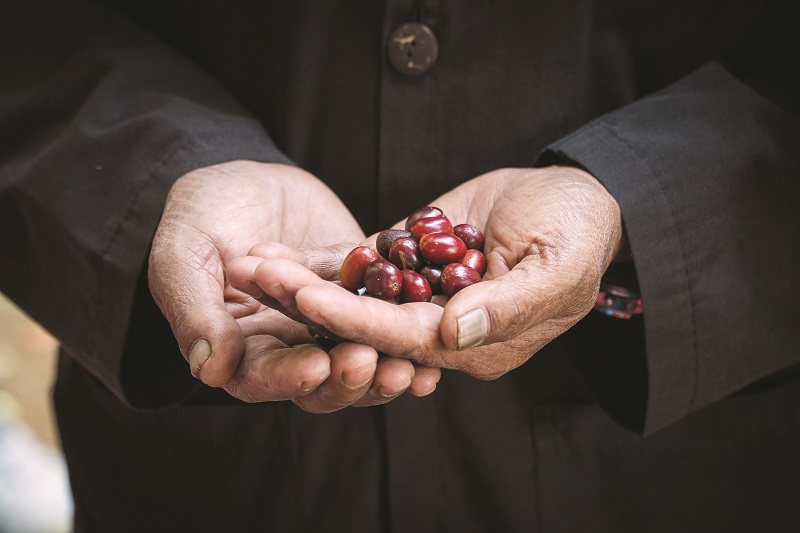
The seeds are then sun-dried before being hand-sorted by women to remove stray pulp (most other coffee producers have mechanised this process) and spread out on parchment in massive sheds for a final round of drying. These are then packed in 60kg sacks and sent to the dry mill.
Said mill was on our itinerary the next day, after a stop at Pak Udin Diha’s farm 1,483m above sea level to experience agroforestry at a higher altitude. Trucking through a single dirt lane with dense wilderness on either side, the tangle of trees, vines and bracken with creeping purple morning glory was oddly beautiful. We abruptly came upon the coffee trees, planted in discernible rows that resemble a Christmas tree nursery. Sunlight filtered through a stunning variety of tall trees, including eucalyptus and pine, which perfumed the air. Even the coffee plants looked different — taller, with fatter and darker ripe cherries as they are harvested later in the season.
“I was a vegetable farmer but turned to coffee in 2009,” said Pak Udin. “My first harvest was in 2013 and we did very well for three years. But in 2017, productivity collapsed. It stormed all year and the coffee just slept because there was no dry season. The same thing happened in 2018, but it seems to have bounced back this year. The business is very weather dependent, so a lot of it is out of our hands.”
_a730432.jpg
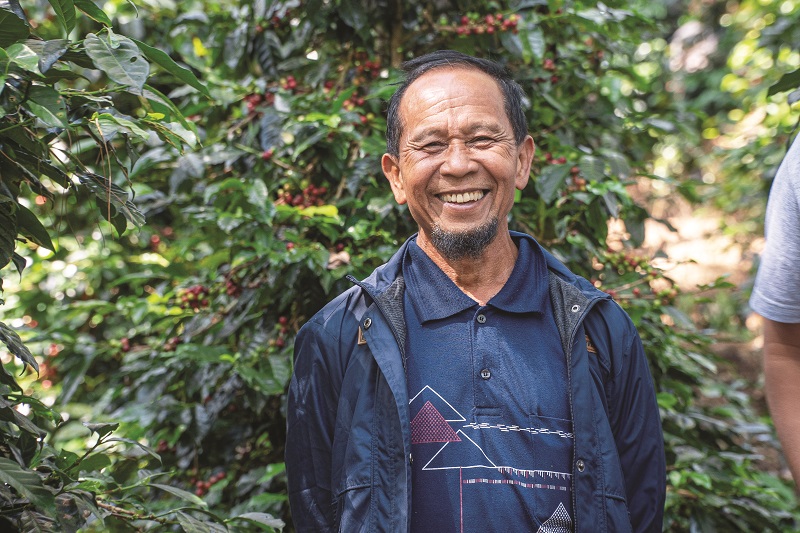
Some of the concerns can be addressed by technology. At this altitude, excessive shade coverage by towering trees can restrict sunlight and, therefore, coffee plant growth. A phone camera and app measure the coverage to ensure it is within the optimal zone. Other issues are addressed the old-fashioned way, by letting nature take its course. Further down from groves of aubergine, pumpkin and tomatoes tucked between the hardwood trees are large composting shacks, thick with cobwebs and scurrying spiders. Farming waste comprising coffee pulp and husk, fruits and vegetables are brought here, dispensing with the need to buy chemical fertilisers.
At the dry mill, we observed the hulling, sorting and grading of seeds. On conveyor machines, strong vibrations separate the green beans from their dry husk, the final layer of protection that preserves the aroma during fermentation and drying. In another section, machines sorted seeds according to density and then, size. The beans smell green and nutty when raw; it is after roasting that you get that recognisable aroma of coffee.
_a730759.jpg
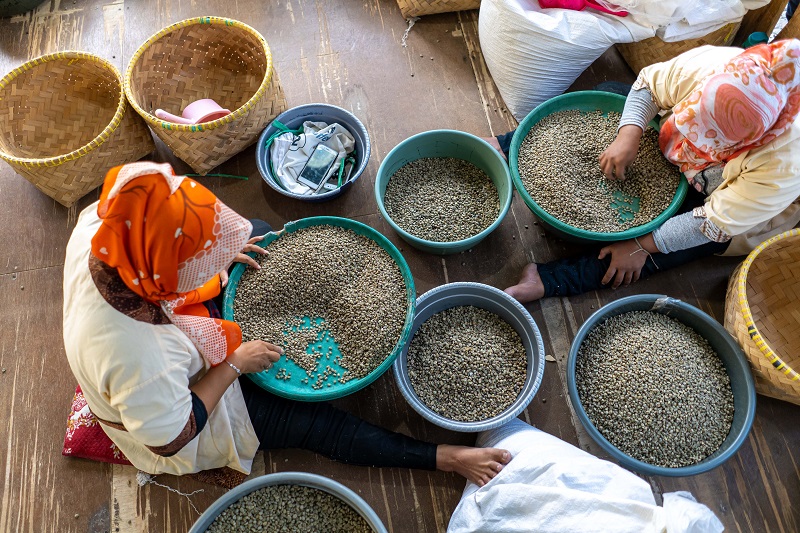
The next stage is the most interesting, summarising the local approach to coffee cultivation and its impact on the community. In an airy structure, dozens of women go through the sacks, pouring green beans out onto rattan winnowing baskets for a final round of quality checks. Eagle eyes and deft fingers make quick work of removing defective beans. A woman guides me through the process and shares how the work empowers her, a retiree, to earn an income. In the few minutes of our conversation, she has picked over 50 beans that do not make the cut; I found just four.
Nespresso sources the highest density, biggest beans from Java for greatest coffee extraction. There is a buyer for every grade of green beans, from speciality boutiques around the Indonesian archipelago to purveyors of cheap instant coffee. The sorted beans are packed and shipped to various destinations — Switzerland, in the case of Nespresso, where they will undergo further quality checks before roasting.
Partner, not saviour
The story of a global corporation and small business owners rarely has a heart-warming ending but this tale is unusual by the respectful stance Nespresso adopts in its relationship with the Javanese farmers.
Rather than dictating processes and procedures, Nespresso entered the region in 2014 to facilitate the education and ambitions of the farmers. It funds programmes and organises workshops on best agricultural practices to improve productivity and quality, working alongside organisations such as producer, supplier and trader Olam Specialty Coffee and coffee farming collective Paguyuban Tani Sunda Hejo Klasik Bean.
It was Olam that Nespresso approached to expand its AAA Sustainable Quality Program in Indonesia, a collaboration with Rainforest Alliance to holistically improve coffee quality, landscapes and the livelihood of 100,000 farmers across 13 countries. Although 1,400 smallholder farmers in Indonesia have signed up, they are not bound to Nespresso in any way and are free to sell their coffee to the highest bidder.
_a730069.jpg
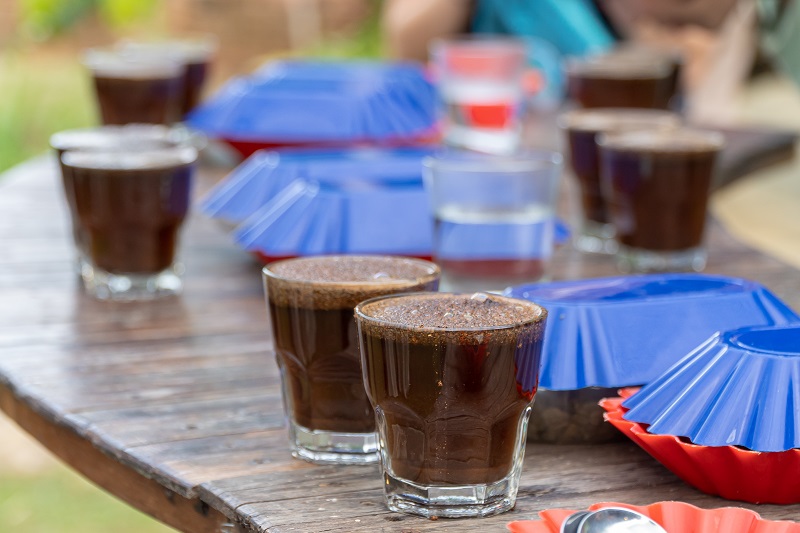
Yet, they remain loyal to the brand because they see its long-term commitment to their welfare and region, whether directly through the planting of 100,000 coffee trees in the forests or through trickle-down effects such as empowering women in a patriarchal society to earn an income and even run their own farms.
“It was important that we did not come in with illusions of being a saviour,” said Manu, who was warmly received and greeted everyone personally in return at the farms and mills. Despite being based in Switzerland, he is clearly a familiar face around here. “Sustainability is a long game and it took years to establish trust. The farmers understand what they need better than we would, so we are careful to not impose anything, but instead see how we can help or add value. Change does not come from pushing. We have a responsibility to respect local culture and traditions. People will only do something when they are convinced it is right for them.”
Nespresso’s generosity in knowledge and profit sharing has not gone unnoticed and the eagerness of the farmers to embrace these opportunities has seen positive returns, including the revival of wildlife as the replanted forests flourish. The brand introduced the farmers to a local NGO that rehabilitates the endangered Javan gibbon and the strong sense of ownership towards the forests has transformed the farmers into guardians who watch out for illegal poaching.
“Since we grew the forests and the coffee farms, birds, bees, deer and wild boar have returned,” one farmer shared. “We have even seen tiger tracks.”
This affirmation of coffee as an agent of conservation and model of building an economy around the promotion of healthy ecology weaves in well with The Positive Cup philosophy. Every recyclable capsule of Nespresso’s Dharkan blend contributes to this cycle. And at RM2.50 per capsule, that is a small — almost too small — price to pay for good coffee and an even better story.
This article first appeared on Aug 12, 2019 in The Edge Malaysia.


